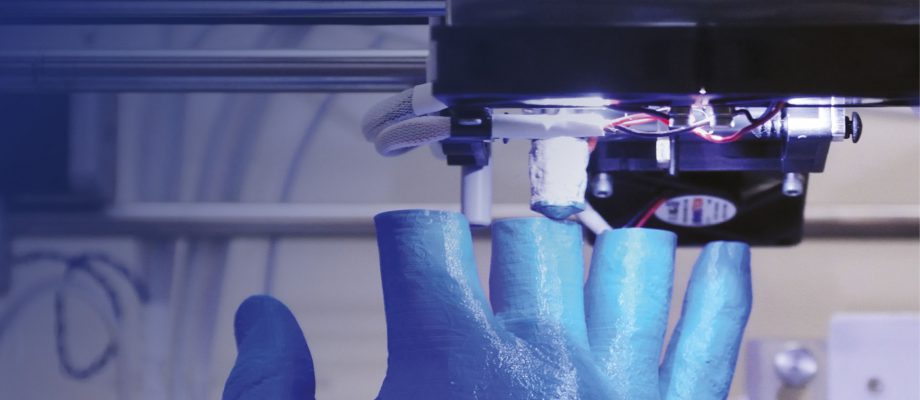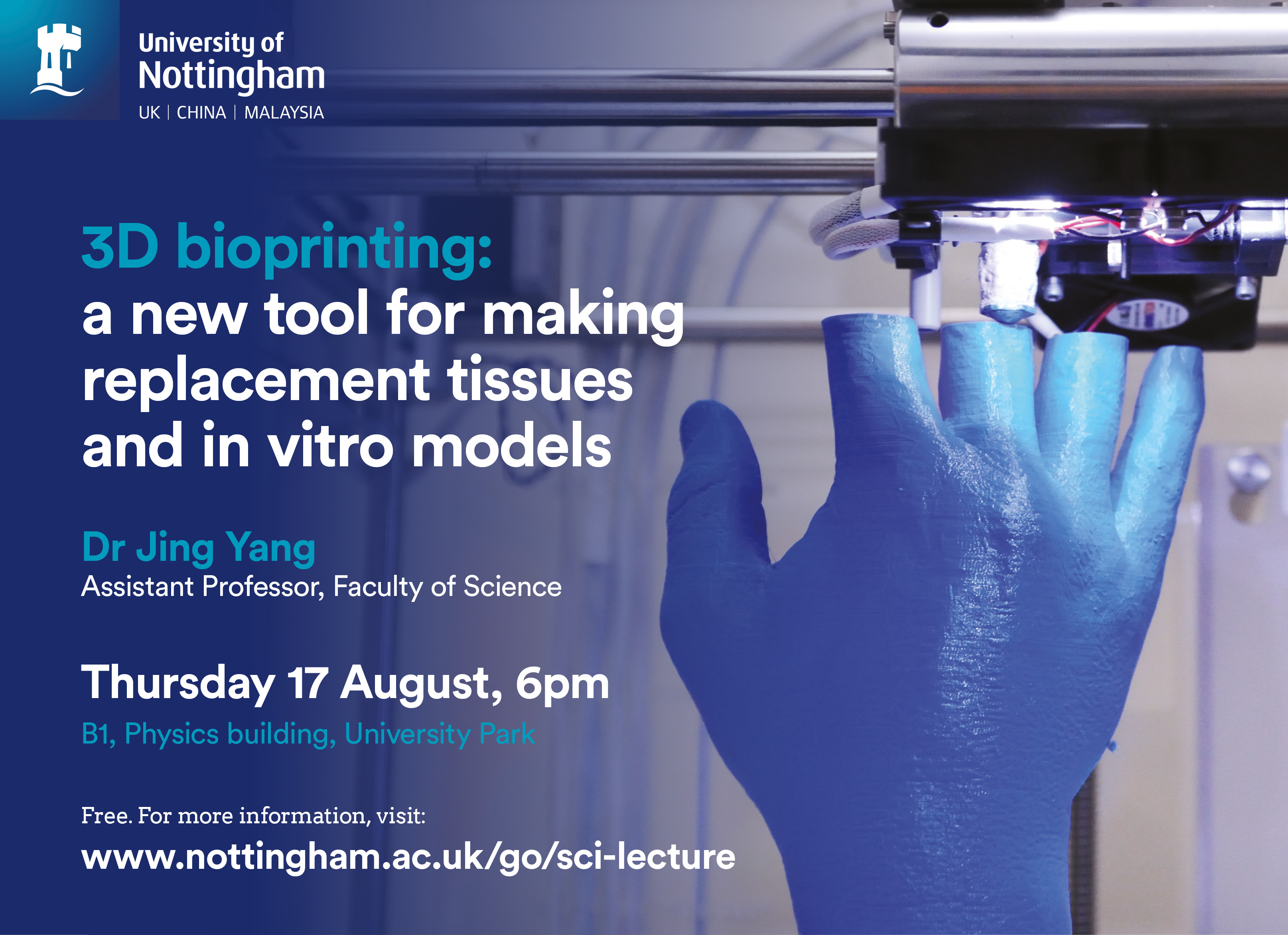3D bioprinting: a new tool for making replacement tissues and in vitro models

3D bioprinting has emerged as a new tool for fabricating functional replacement tissues and ultimately organs.
The pharmaceutical industry is also keen to develop more predictive in vitro cell-based models to reduce attrition rate during drug development. 3D bioprinting is a layer-by-layer manufacturing technology that can place living cells and biomaterials in three dimensions to make living and functional structures that mimic human tissues and organs. 3D bioprinting of human tissues have been investigated by research groups and companies around the world. Development of bioprinted tissues and organs requires joint efforts from multiple disciplinaries such as biomaterials, engineering and stem cell biology, and collaborations between academics, clinicians and industrialists. Bioprinted human tissues are currently at different development stages towards clinical applications.
In this lecture, some recent and promising advances in 3D bioprinting of tissues and organs will be introduced. The underpinning technologies and sciences for bioprinting tissues will also be discussed.
This event is free. For more information, please visit the Science Public Lectures webpage.
Tags: 3d bioprinting, Faculty of Science, School of Physics and Astronomy, Science Public Lecture, science public lecture series
Leave a Reply
Upcoming Events


